Ancient art is more than just beautiful works crafted from stone, paint, or metal—it is a living record of human history. When we gaze upon these old masterpieces, we are not only seeing an object, but also stepping into a world where every brushstroke, carving, or sculpture tells a story. These works reveal the lives of civilizations long gone. They show us what people valued, how they saw the world, and what they believed in. Every piece of ancient art, whether it’s a simple cave painting or an intricate sculpture, speaks volumes about the culture it came from.
From the dusty tombs of Egypt to the temples of Mesopotamia, art has always been a powerful way to communicate. In a time when writing was scarce or nonexistent, art was the language of the people. It carried deep meaning, whether it was to honor gods, commemorate leaders, or document daily life. In this sense, ancient art is more than a reflection of the past—it is a key to understanding it.
Imagine walking through the ruins of an old city. There, you see statues of gods, kings, and warriors. These figures are frozen in time, yet their presence is alive with the stories they represent. The colors may have faded, but the message remains. Ancient art continues to speak to us, thousands of years after it was created, showing that the past is never truly lost. Through these works, the dreams, fears, and hopes of long-gone civilizations remain with us today.
Table of contents
- 1 The Origins of Ancient Art
- 2 Mesopotamian Art
- 3 Ancient Egyptian Art
- 4 Greek Art and Its Impact on the World
- 5 Roman Art: The Bridge Between Old and New
- 6 The Art of Ancient China
- 7 Art of the Indus Valley Civilization
- 8 Pre-Columbian Art of the Americas
- 9 African Art: The Forgotten Treasures
- 10 The Influence of Religion on Ancient Art
- 11 How Ancient Art Reflects Society
- 12 Preservation and Study of Ancient Art
- 13 The Enduring Legacy of Ancient Art
- 14 Conclusion: Why Ancient Art Matters Today
The Origins of Ancient Art
Art began as a means of expression long before civilizations took form. Cave paintings and petroglyphs are among the oldest forms of artistic creation, found in caves around the world. These works often depicted animals, hunting scenes, and rituals. They provide insight into the daily lives and beliefs of early humans.
The symbolism behind early art is significant. These paintings weren’t just for decoration—they were tools for communication, ritual, or storytelling. They often held spiritual meaning, with images believed to invoke protection or success in hunting.
Mesopotamian Art

In Mesopotamia, art flourished in the birthplace of civilization. This region is home to some of the earliest known cities, and its art reflects a highly developed society. Large temples and grand sculptures were created to honor their gods and rulers.
Sculptures and temples from this era are monumental. Ziggurats, towering structures that reached toward the sky, symbolized the connection between heaven and earth. The statues, often made from stone or bronze, depicted gods or powerful rulers with a sense of awe and reverence.
Ancient Egyptian Art
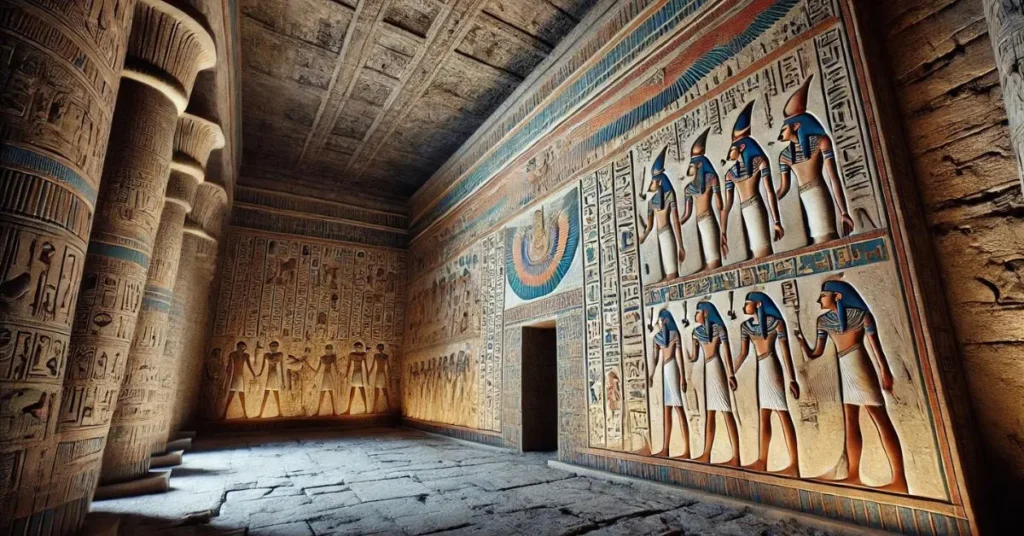
Ancient Egypt is renowned for its rich artistic traditions. Hieroglyphics, a unique blend of art and writing, was one way Egyptians told their stories. These intricate symbols adorned temples, tombs, and monuments, creating a lasting record of history and mythology.
The role of Pharaohs in art was immense. Egyptian rulers commissioned vast artworks to showcase their divine status. From grand statues to colorful tomb murals, the art emphasized the power and immortality of the pharaohs.
Tomb art and the afterlife held great importance. Egyptians believed that art within tombs ensured a successful journey into the afterlife. These vibrant works depicted scenes of daily life, offerings, and interactions with the gods.
Greek Art and Its Impact on the World

Classical Greek sculptures are famous for their pursuit of beauty and realism. Artists perfected the human form, capturing muscles, movement, and emotion. These sculptures are often seen as a reflection of the Greeks’ ideal of harmony between mind and body.
Pottery and frescoes were also integral parts of ancient Greek art. Pottery often depicted mythological tales or scenes of daily life, while frescoes adorned public and private spaces with vibrant color and detail.
Roman Art: The Bridge Between Old and New
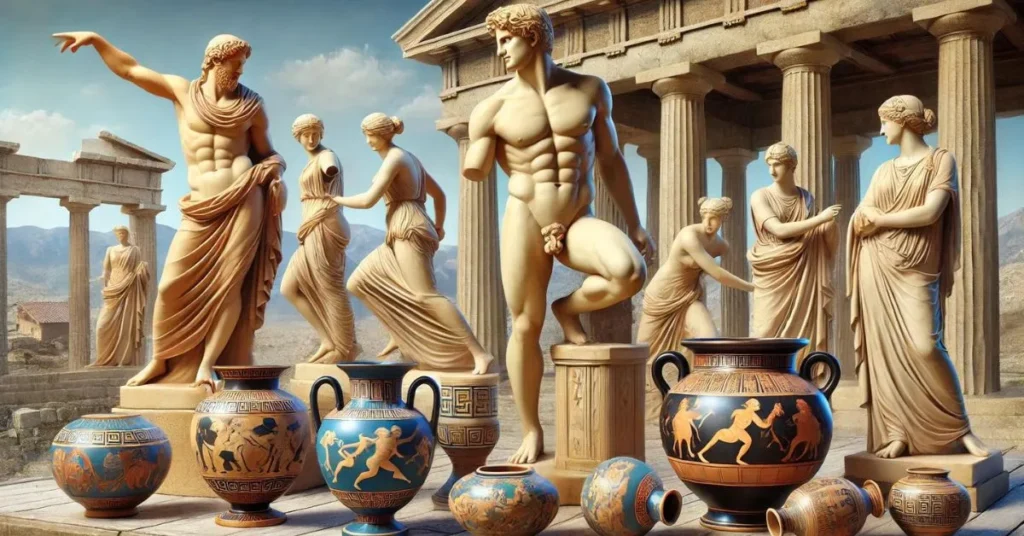
Roman art inherited much from the Greeks, yet added its own unique touch. Mosaic masterpieces were particularly notable, with intricate designs made from small tiles. These colorful works often adorned floors and walls in public buildings and homes.
Public monuments and statues in Rome were massive and served to glorify the emperors. The Colosseum and statues of leaders like Augustus were not just art—they were symbols of Rome’s power and influence across the known world.
The Art of Ancient China
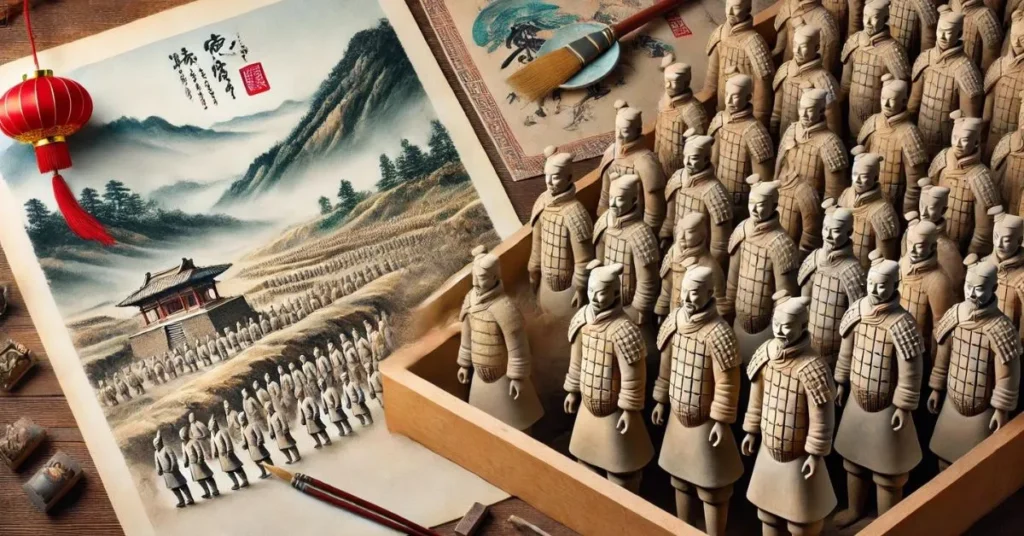
In ancient China, art took many forms, from calligraphy to silk paintings. Calligraphy was more than just writing—it was an art form in itself, blending philosophy and aesthetics into each brushstroke. Silk paintings, on the other hand, were graceful depictions of landscapes, nature, and the human spirit.
The Terracotta Warriors, an astonishing collection of over 8,000 life-sized statues, are a testament to the artistic and military strength of China. These figures, created to guard the tomb of Emperor Qin Shi Huang, are a remarkable achievement in both scale and detail.
Art of the Indus Valley Civilization
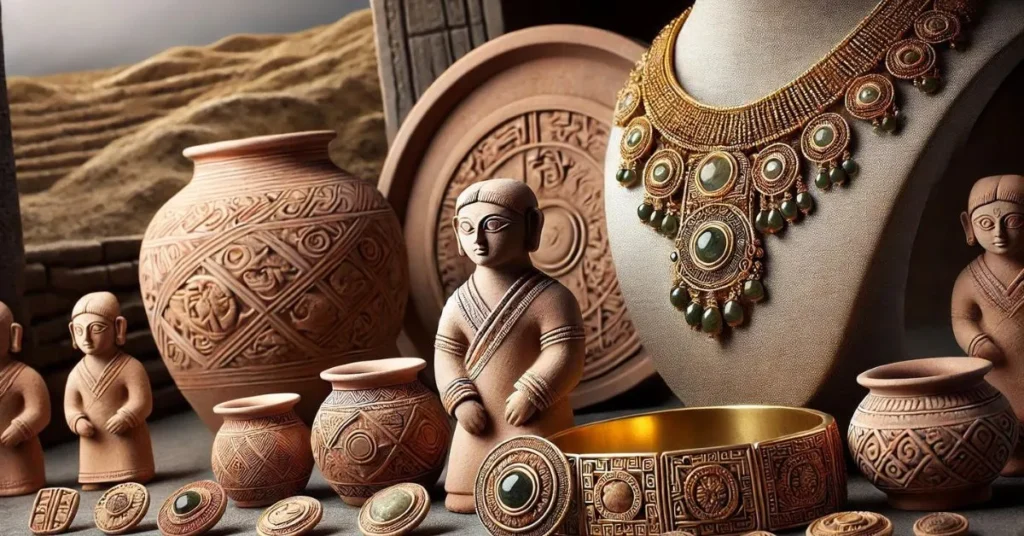
The Indus Valley Civilization produced unique art that reflected its rich culture. Small figurines, crafted from terracotta, were common and often portrayed women, animals, and religious symbols. Their jewelry, made from gold, stones, and shells, displayed exceptional craftsmanship.
Seals and pottery were also key components of their artistic heritage. Seals, often used for trade, featured intricate designs and symbols that remain mysterious to this day. Pottery, decorated with geometric shapes, was both functional and beautiful.
Pre-Columbian Art of the Americas
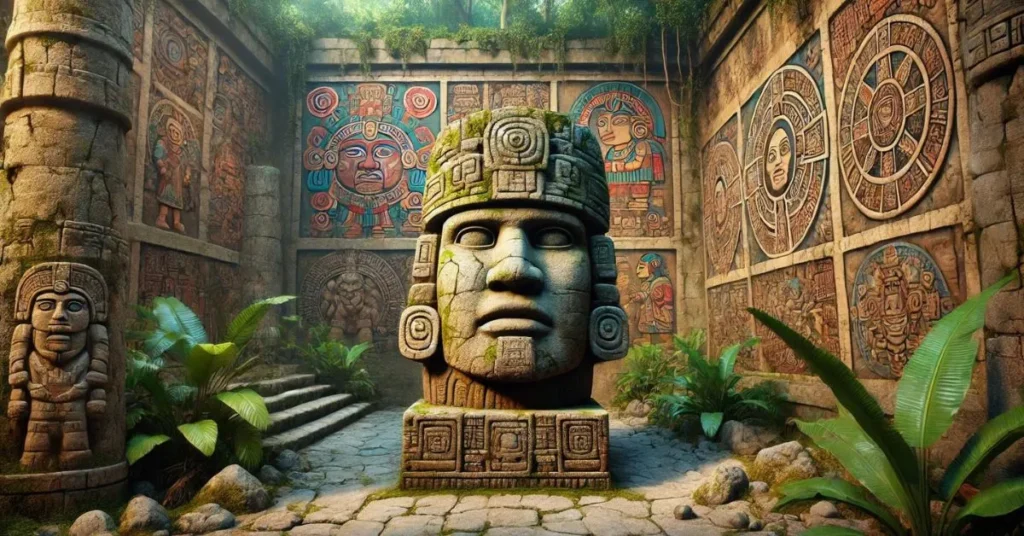
In the Americas, ancient civilizations like the Mayans, Aztecs, and Olmecs left behind remarkable art. Mayan and Aztec art focused heavily on religion, with temples and carvings dedicated to their gods. Their use of vivid color and bold designs made their work instantly recognizable.
The Olmec Colossal Heads, massive stone sculptures, remain a mystery to modern archaeologists. These heads are believed to represent rulers, and their sheer size reflects the Olmecs’ skill in working with stone.
African Art: The Forgotten Treasures
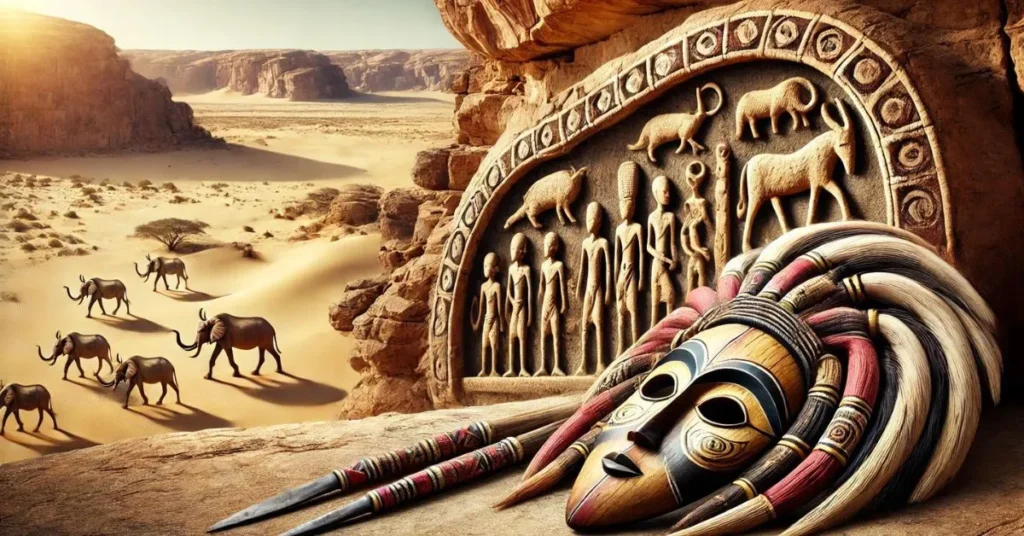
African art is often overlooked, but it holds incredible value. The rock art of the Sahara offers a glimpse into early African life, with carvings and paintings that date back thousands of years. These works depict animals, human figures, and spiritual symbols.
Wooden sculptures and masks were essential to African art. These pieces, often used in ceremonies, were rich in symbolism and craftsmanship. Masks, in particular, played a significant role in rituals, representing deities or ancestral spirits.
The Influence of Religion on Ancient Art
Religion was a major force in shaping ancient art. Temples and shrines were often the focal point of a community’s artistic efforts. These sacred spaces were adorned with intricate carvings, murals, and sculptures to honor their gods.
Sacred symbols and deities were also frequently depicted in art. From the Egyptian sun god Ra to the Greek god Zeus, these figures dominated ancient artistic themes and inspired great works of devotion.
How Ancient Art Reflects Society
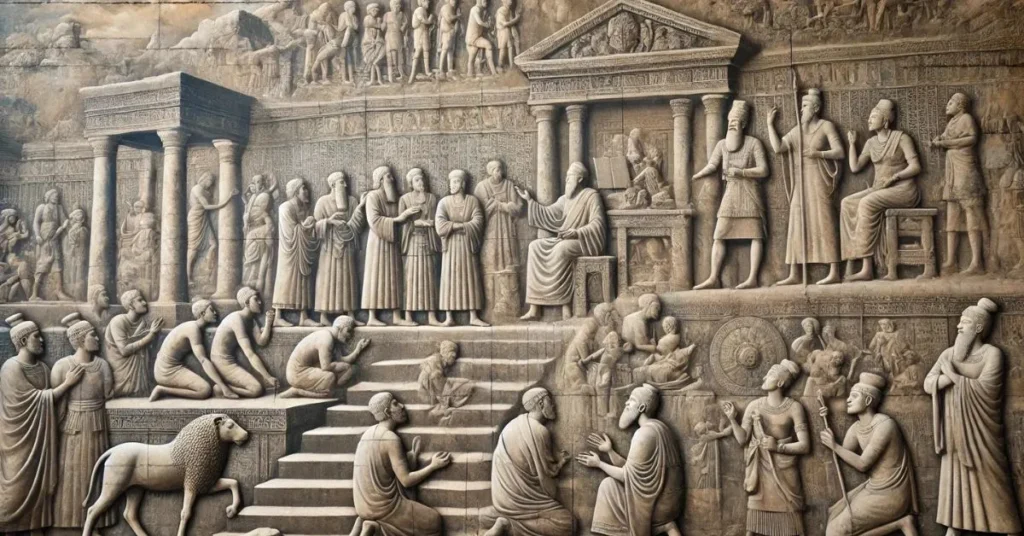
Art in ancient times was not just for beauty—it was a tool for communication. Storytelling through art allowed people to pass down their history, myths, and cultural values. Whether through murals, pottery, or sculptures, these visual stories preserved traditions for future generations.
Social status and art were closely linked. The wealthiest members of society often commissioned large works, displaying their power and influence. Kings, emperors, and pharaohs used art to cement their legacy.
Preservation and Study of Ancient Art
Preserving ancient art is a complex task. Archaeological discoveries continue to shed light on forgotten cultures, revealing treasures buried for millennia. These finds help us understand the artistic methods and materials used by ancient peoples.
Modern techniques in art conservation play a crucial role in keeping these masterpieces intact. Today, scientists and art historians use technology to preserve ancient art, ensuring that it can be studied and appreciated for generations to come.
The Enduring Legacy of Ancient Art
The legacy of ancient art can still be felt today. Inspiration for modern artists comes from these timeless works, as many seek to replicate the beauty and symbolism found in ancient cultures. Painters, sculptors, and even architects often draw upon ancient techniques in their work.
The global influence of ancient art styles is undeniable. From Greek columns in modern buildings to the symbolic motifs found in African tribal art, ancient art continues to shape the world of today.
Conclusion: Why Ancient Art Matters Today
Ancient art offers us more than just aesthetic value—it’s a connection to the human story. These works serve as a reminder of our shared history, the struggles and triumphs of our ancestors, and the beauty they created. As we look back at the art of ancient civilizations, we are reminded of how far we have come and how deeply art is embedded in our identity.

